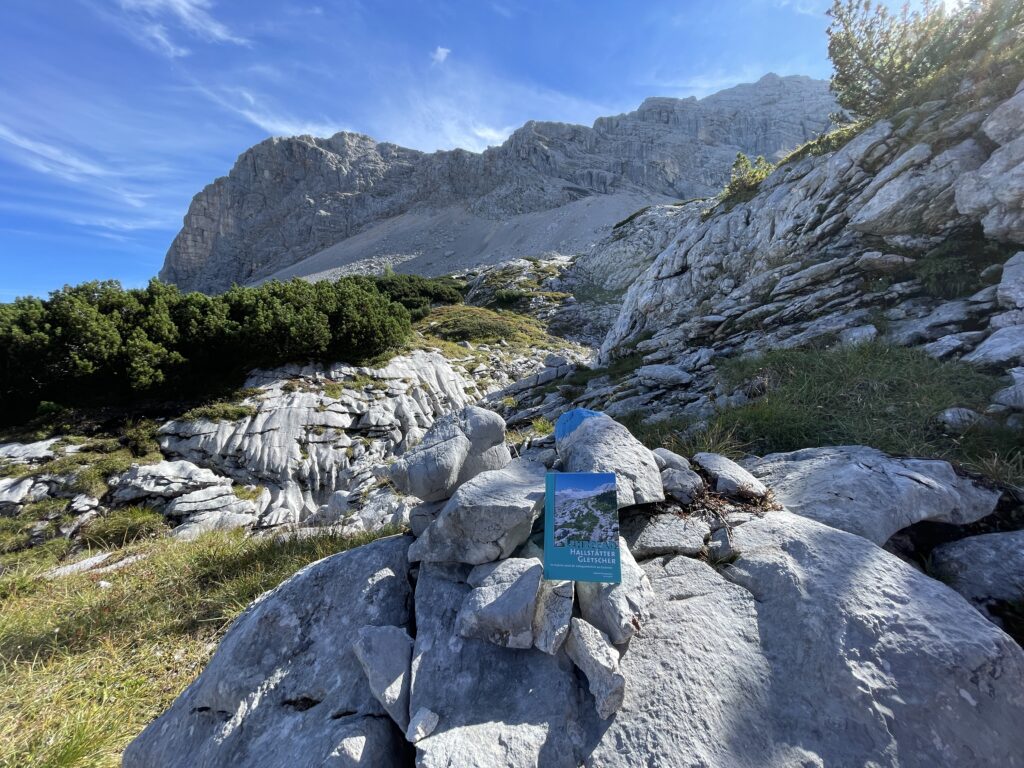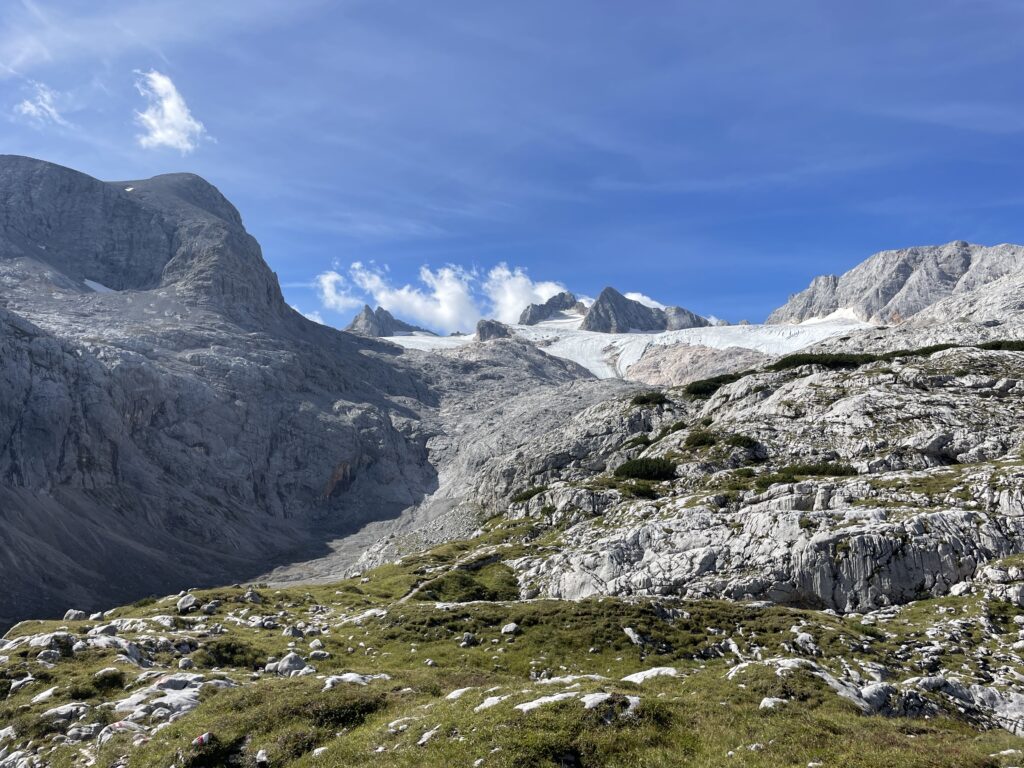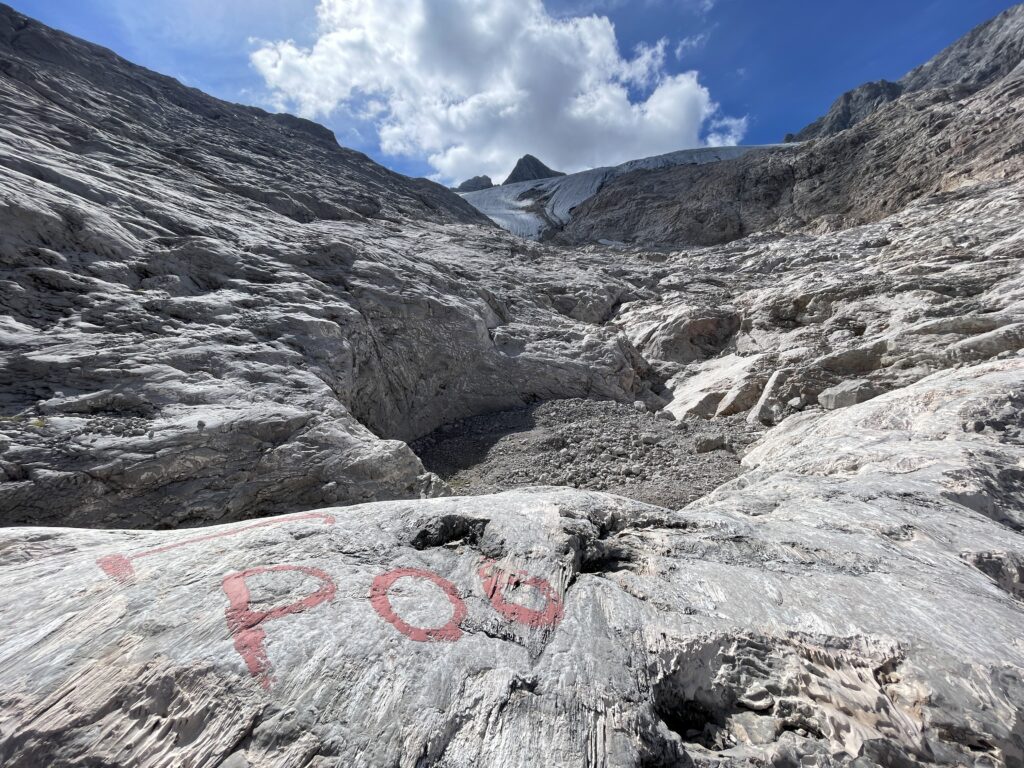On this day the students set off again towards Deutschlandsberg. They went back to the Krippenstein cable car and then took the train towards Graz.
Meanwhile we were able to further examine the area around the Simonyhütte.
After we were able to study the Hallstatt Glacier yesterday, today’s theme is the Dachstein Massif, and here especially the wealth of forms of the Dachstein Limestone, which builds up a large part of the Northern Eastern Alps. It is mainly Mesozoic limestones and Triassic dolomites with an age of 240 – 200 million years and a thickness of about 1000 m. On the dissected peaks and on the rocks in place, a banking of the outcrop is noticeable. The limestone is in parts crossed by quartz veins, furthermore it often shows inclusions of megalodonts. Due to the limestone outcrop, the mountain is strongly karstified and leads to an almost complete underground drainage, which is why the Dachstein glacier, as already seen yesterday, does not have a classic glacier gate with an emerging glacial stream. The largest parts of the plateau have the character of a lost river.
The karst landscape’s wealth of forms includes many caves, which have a concentration at altitudes of 1500 – 2000 m above sea level. Different karst phenomena can be observed on the surface, starting with the millimeter to centimeter sized grykes on the rock surfaces, the gully holes, which can reach a few meters in diameter as circular holes and lead straight down into the depths. They are often formed at the edge of fissures by episodically flowing water.
The surface is particularly structured by several sinkholes and dolinas, which reach shallow oval depressions up to several tens of meters in size and are formed by the dissolution of limestone. Sometimes these sinkholes are connected with underground chambers, so that they can reach depths of several 100 meters.







